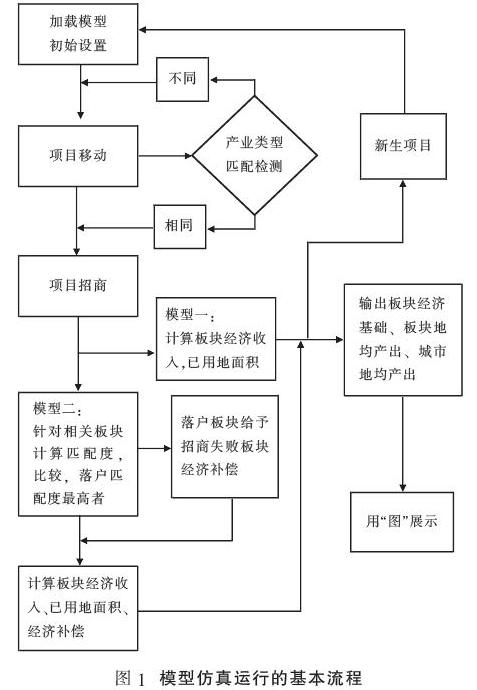板块驱动型城市产业招商模式优化建模及仿真
2019-07-08寇晓东汪红
寇晓东 汪红



摘 要: “板塊经济”(“功能区经济”)是中国城市发展的重要路径,有利于激发城市经济活力,但其碎片化布局带来板块间的不良竞争以及城市整体利益的损耗。在国家引导经济高质量发展的新阶段,依靠板块经济驱动的城市发展,急需通过以项目招商及落地为核心环节的板块间产业资源配置关系调整,实现城市经济利益的整体优化。为此提出“建立产业项目招商协调机制有利于多板块城市经济利益整体提升”的研究命题,选择大西安城市板块产业发展及招商为对象,借助多主体建模方法和NetLogo仿真平台,分别建立“谁招商、谁受益”和“大招商、大受益”两种模式下的城市产业招商模型,并开发对应的仿真运行程序。仿真结果表明,产业项目招商协调机制具有可行性,且在给定参数条件下,大西安城市板块间产业项目流转补偿率的满意区间为[10%, 25%]。基于大西安的多板块城市产业招商建模及仿真,既为大西安产业招商模式优化的政策改进提供了论证,也为同类问题研究奠定了开展政策仿真的基础。
关键词: 城市板块; 产业招商; 协调机制; 政策仿真
中图分类号: F127 文献标识码: A DOI:10.13411/j.cnki.sxsx.2019.02.020
Abstract: The “development zone economy” (“functional area economy”) is an important path for development of cities in China and is helpful to boost urban economy. However, the fragmented distribution of development zones in a city brings negative competition among them and does harm to interests of the city as a whole. In the new era of high quality oriented economic development, urban development driven by development zone economy needs to upgrade to achieve an overall optimization of urban economic interests by adjusting industrial resource allocation among development zones with the focus on way of attracting and locating industrial project. The proposition that establishment of a coordination mechanism for industrial project attracting is good to promote the overall urban economic interests, and industrial development and project attracting of Greater Xian with dozens of development zones are chosen as the research objects. By employing multi-agent modeling method and NetLogo simulation platform, two models of urban industrial project attracting are built, i.e., “who firstly introduces a project, who gets it” and “who mostly matches a project introduced, who gets it”, and the corresponding simulation programs are developed as well. The simulation results indicate that the proposed coordination mechanism for industrial project attracting is feasible, and the satisfactory compensation rate interval under given parameters for industrial project turnover among relative development zones of Greater Xian is [10%, 25%]. Modeling and simulation of industrial project attracting for development zones driven cities based on Greater Xian lay a foundation both for policy improvement of industrial project attracting mode optimization of Greater Xian, and for policy simulation of similar problems.
Key words: urban development zone; industrial project attracting; coordination mechanism; policy simulation
